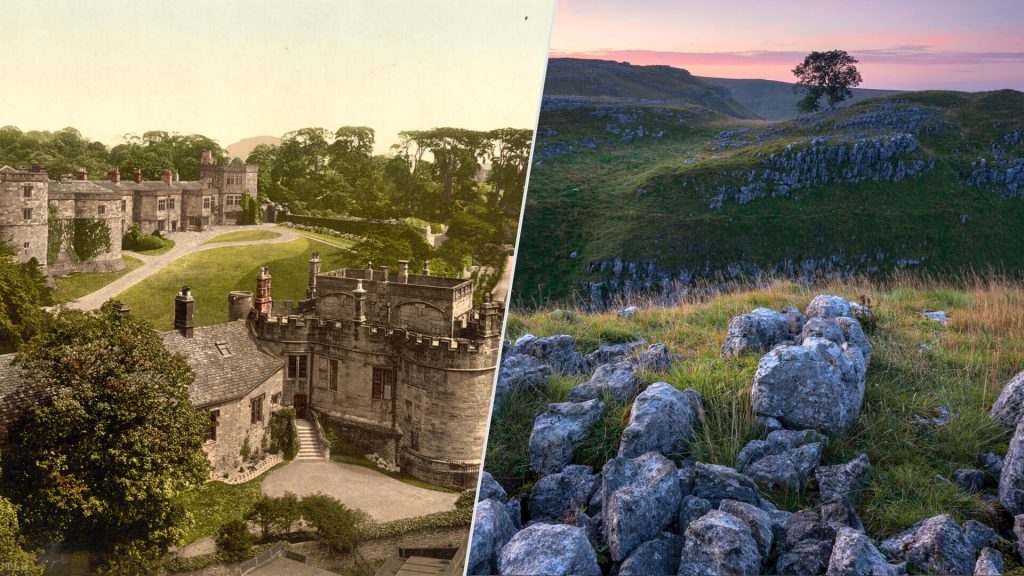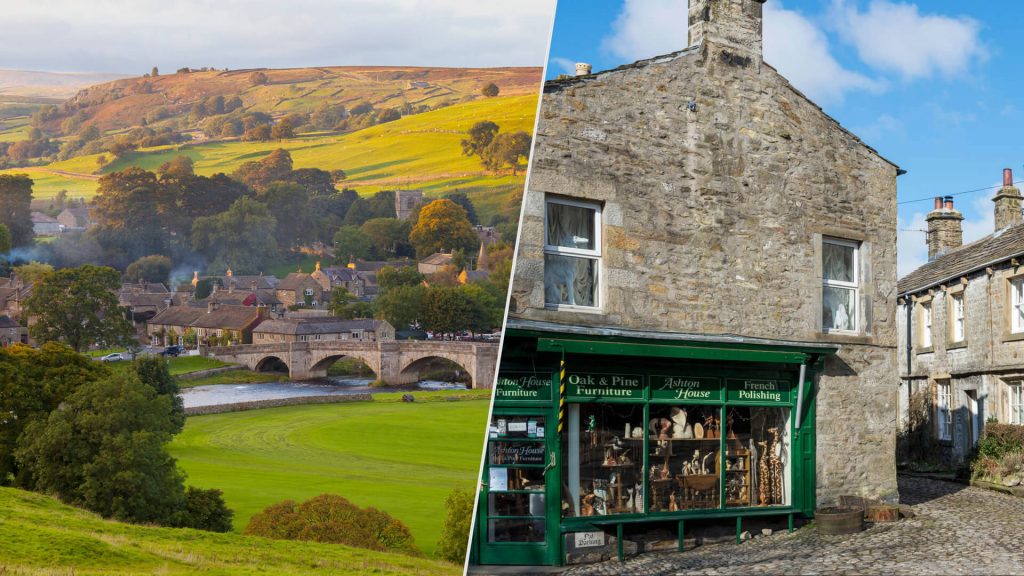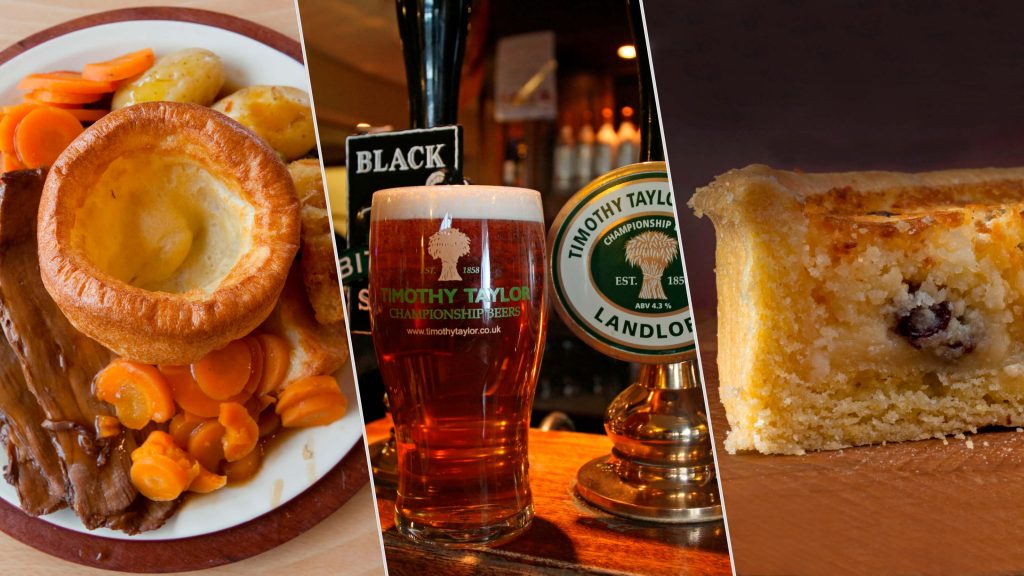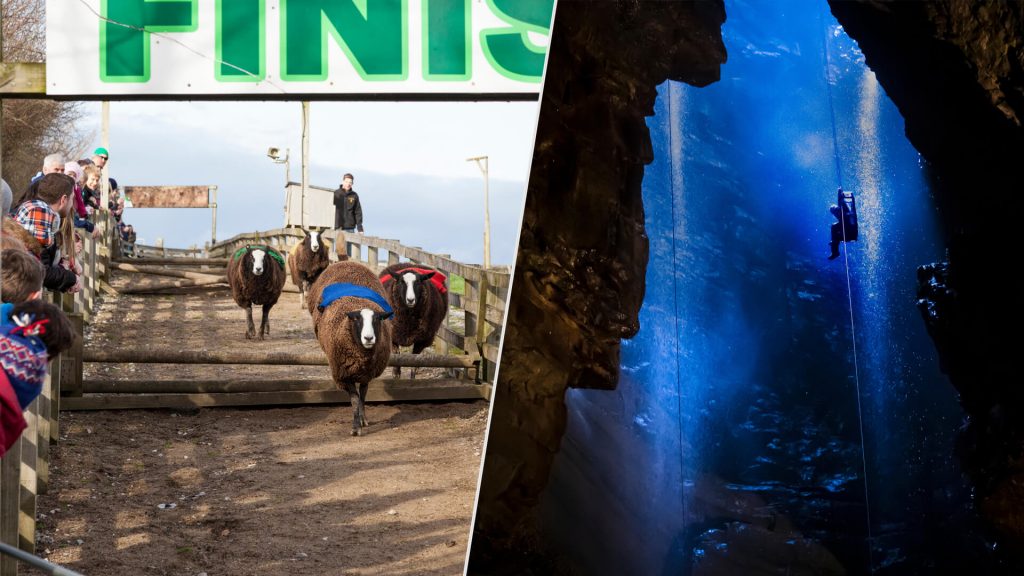The Yorkshire Dales: An Armchair Travel Guide
We’re all enchanted by the Yorkshire Dales setting of All Creatures Great and Small. The Dales are renowned for outstanding scenery and a sense of timelessness. Until a visit is possible, sample our guide to top attractions in the Yorkshire Dales National Park, must-see villages, what’s to eat besides Yorkshire pudding, and discover some proud local traditions. The place is called “God’s own country” for a reason!
- 1.
Where the Yorkshire Dales are Located

The Dales cover over eight hundred square miles in north-central England. The UK cities of Manchester and Sheffield sit near their southern perimeter and Scotland’s border is about 106 miles north of their upper boundary. Running through the middle of the Yorkshire Dales are the Pennines, a mountain range nicknamed the “backbone of England.” There are 10 official dales (or valleys) according to the Yorkshire Dales National Park; most are named for the river cutting through them—Wharfedale for the River Wharfe, Swaledale for the River Swale, etc.
- 2.
Yorkshire Dales National Park

(Left to right: Skipton Castle and Malham Cove.) Most of the Dales’ geography now falls within the Yorkshire Dales National Park, created in 1954. Unlike such parks in the U.S., this is not solely a wilderness area, but a place to live and work for over 24,000 people. Over 90 percent of the park is privately owned by those farming the land, owning the buildings, and running the businesses. That said, some of the area’s biggest attractions, including rare natural wonders and medieval runs are within the park’s borders. Some highlights:
Ancient Skipton Castle stuns visitors with how superbly it’s preserved. While begun around 1090 AD, the building’s later stonework dates to Tudor times. Sightseers can explore almost every corner of this ruin, from the banquet hall and kitchen to its bedchambers and privies. After the history tour, pop over to the town of Skipton’s High Street, said to be one of the area’s most attractive shopping districts.
The park’s many waterfalls are a big draw and especially dramatic on rainy days. You may encounter a crowd at popular Aysgarth Falls, a triple flight of waterfalls descending over a mile-long stretch of River Ure in Leyburn; Ingleton Waterfalls in the village of Ingleton, a spot favored by hikers as its circular 4.3-mile trail visits six falls; Catrigg Force, a hidden gem deep within a secluded gorge near Stainforth Village; and Janet’s Foss in Malham, named for Janet, Queen of the Fairies, where James Herriot took a dip in Season 1 of All Creatures Great and Small—and visitors can, too!
Bolton Abbey is a 12th century monastic estate on a picturesque bend of the River Wharfe. Picnickers enjoy steppingstones over the water and over 80 miles of hiking trails. The Abbey was partially destroyed when Henry VIII dissolved monasteries in 1539, but the church’s nave was reclaimed as a parish church for locals and is still in use.
Malham Cove is a giant rock amphitheater lined by vertical cliffs and lies just a 20-minute walk from Malham Village. Hikers climb the steep steps on one side of the cove to reach the expansive and bizarre “limestone pavements” above, a featured landscape in Harry Potter and the Deathly Hallows.
Explore the Yorkshire Dales National Park website for other recommended sites, short and long-distance routes for hiking or cycling, advice about accessibility, upcoming events, and other guidance.
- 3.
Picture-Postcard Villages

(Left to right: village of Burnsall and the market town of Grassington.) Nestled in the breathtaking Dales countryside are incredibly picturesque market towns. Middleham in Coverdale isn’t big enough to be considered a village, but it still boasts two market squares full of antique shops and pubs, lovely historic buildings, and nearby Middleham Castle where King Richard III spent his childhood in the 1460s. For two hundred years, the town has also been a center for training racehorses. The majestic animals are walked through the streets daily on their way to “gallops” on the low moors outside town.
One of the loveliest villages in Wharfedale, Burnsall began as a Viking settlement at a bend of the River Wharfe surrounded by protective fells (or hills). There are a few hotels, a village shop, and two cafes. Burnsall is popular with hikers: the “Dales Way” long distance footpath passes through the village in its 80-mile run from llkley to Bowness-on-Windmere; you can take a separate, quiet walk to the tiny, almost-hidden hamlet of Thorpe; and if you dare, you might take the trail to Troller’s Gill, a limestone gorge allegedly haunted by a ghostly hound known as the Barghest.
One of England’s highest towns, Hawes in Upper Wensleydale offers glorious views from a vantage point 850 feet above sea level. It’s home to the world-famous Wensleydale cheese, which you can see being made at Wensleydale Creamery. The Dales Countryside Museum got a recent facelift and has been recognized as a “hidden gem” by VisitEngland for its interactive exhibits on archaeology, local crafts and industry. A short walk from town brings you to Hardraw Force, a waterfall plunging a dramatic 100 feet. Also nearby is Bolton Castle where Mary Queen of Scots was temporarily imprisoned in 1568.
With its stone cottages and large cobbled square, Grassington was chosen to stand in for the fictional Darrowby in All Creatures Great and Small. Grassington’s Devonshire Inn became the “Drovers Arms” for the TV series; The Stripey Badger bookstore morphed into a local greengrocer; and the Rustic Rabbit gift shop transformed into “Higgins Bakers.” Apart from filming locations, the village offers scenic walks along the River Wharfe or through the Grassington Moor. The community is at its busiest during two annual festivals: a music and arts event each June, and December’s Dickensian Festival, which transforms the village into a Victorian-era Christmas market.
- 4.
The Dales for Foodies

(Left to right: Sunday roast with Yorkshire pudding, pint of ale and pub hand pumps, and Yorkshire curd tart.) Just as important as the scenery and history is experiencing Dales’ culture through its cuisine. Foodies make it a point to try regional specialties including ginger beer, deep-fried Wensleydale cheese, Yorkshire curd tart filled with curd cheese (similar to cottage cheese), spices and fruit; and Parkin, a sweet ginger cake with oats and treacle.
Of course, the quintessential Yorkshire repast is the “Sunday roast.” The meal originated as a Sunday luncheon to be enjoyed after church, and consists of roasted meat and potatoes, gravy, and a wide range of vegetables. A large portion of Yorkshire pudding is traditionally served as the first course. In earlier times, the pudding’s batter, made from eggs, flour, and milk, was intended to fill one up before the second, more expensive meat course!
Locally brewed beer is another Yorkshire staple and sampling ales is a must, either after a day of hiking or to escape inclement weather. Pubs decorated in old-world style offer a warm and friendly atmosphere and can include meaningful interactions with locals. Towns often have their own microbrew, so ask the “publican” to pick beers for you. Brewing here has a long, distinguished heritage and there are now over 100 Dales breweries producing Yorkshire bitters, pale and blonde ales, stouts, and porters. Many breweries provide tours so you can watch the process and sample the wares.
- 5.
Off the Beaten Path

(Left to right: sheep racing in Cawthorne and a "potholer" winched into Gaping Gill.) There are a number of un-touristy things to do in the Dales. You could lace up your sneakers and try fell running, for one. Sometimes known as hill running, this traditional sport may be the unsung hero of Dales’ life and culture—it goes back centuries! There are about 50 unique events annually and they offer a unique spectacle for onlookers. The 1.2-mile Kilnsey Crag Race in August makes for good viewing as participants run up and down a nearly vertical rock face! Check out the Run the Dales website for more information.
If you want a slice of Dales farming life, visit a traditional agricultural show between June and September. Many of these village shows are at least a century old and have unique traditions like sheep racing or hay bale competitions. You’ll get a dose of community spirit while sampling local produce and observing livestock judging—with a brass band providing atmosphere.
Satisfy your curiosity and sniff a Norse Viking at the Jorvik Viking Center in the walled city of York, once a Viking settlement. Interactive exhibitions include demonstrations of Viking crafts and manufacturing, artifacts from the site and, best of all, a monorail ride through a recreated and intentionally odiferous Viking village smelling of damp forest, leather, rotting meat and cesspit!
Go caving. There are over 2,500 caves in the Yorkshire Dales National Park—the longest system in the U.K. “Show caves” have lighting and metal grid flooring making them the easiest to explore. The largest show cave is White Scar Cave in Ingleton. A non-walking option involves descending via winch(!) into Clapham Village’s Gaping Gill, a ginormous chamber with space to fit a cathedral. Winching opportunities occur during one week in May and one in August. Finally, guides can be hired for a caving experience that calls for equipment, getting wet, and overcoming claustrophobia!
And finally, step inside the World of James Herriot, a museum housed at 23 Kirkgate in Thirsk; it’s where the author of All Creatures Great and Small lived, worked and wrote his stories. The site is a fully restored time capsule with many of the original home furnishings, dispensary equipment, and memorabilia displaying items related to James Herriot’s writing career.


























